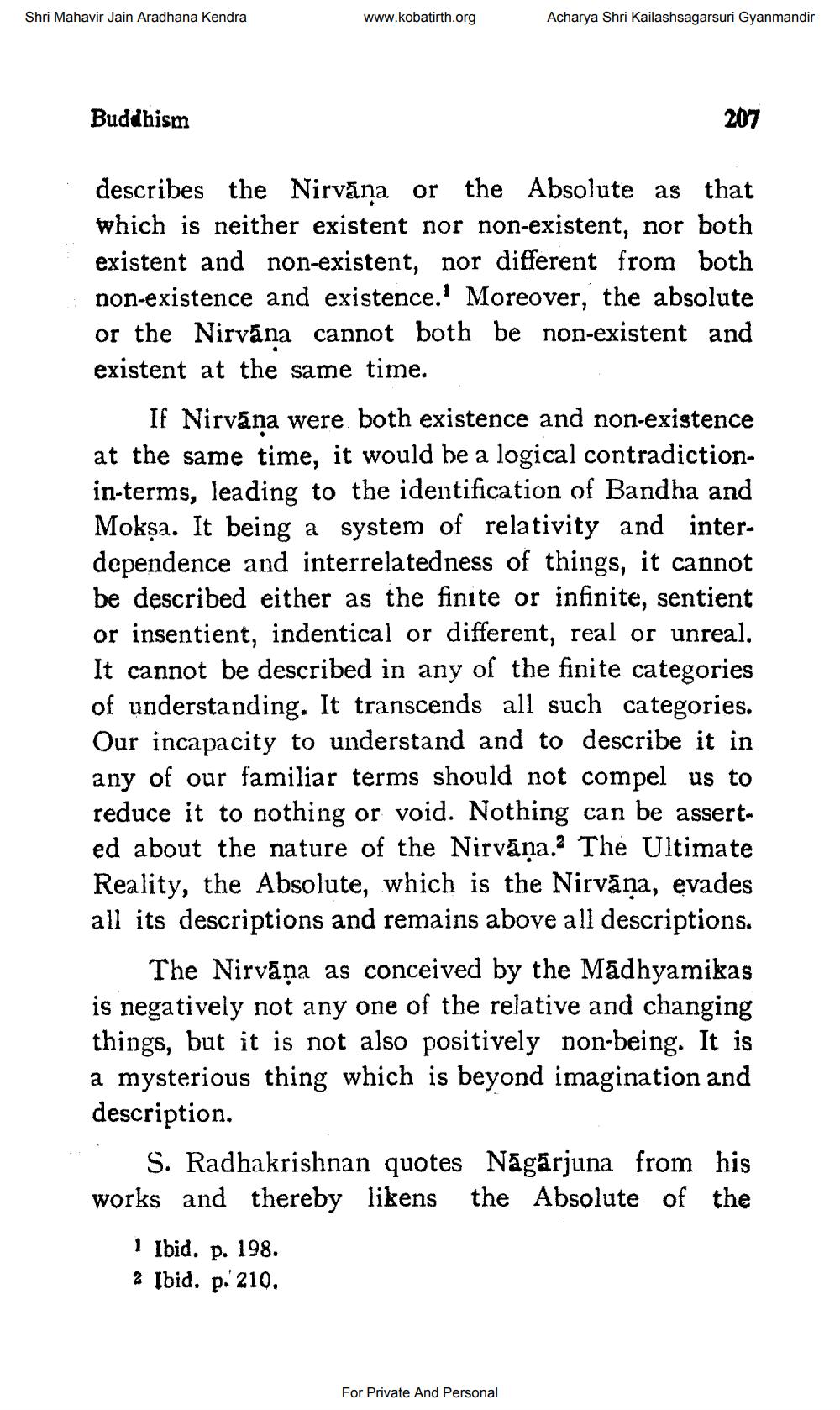________________
Shri Mahavir Jain Aradhana Kendra
Buddhism
www.kobatirth.org
Acharya Shri Kailashsagarsuri Gyanmandir
describes the Nirvana or the Absolute as that which is neither existent nor non-existent, nor both existent and non-existent, nor different from both non-existence and existence.1 Moreover, the absolute or the Nirvana cannot both be non-existent and existent at the same time.
207
If Nirvana were both existence and non-existence at the same time, it would be a logical contradictionin-terms, leading to the identification of Bandha and Mokşa. It being a system of relativity and interdependence and interrelatedness of things, it cannot be described either as the finite or infinite, sentient or insentient, indentical or different, real or unreal. It cannot be described in any of the finite categories of understanding. It transcends all such categories. Our incapacity to understand and to describe it in any of our familiar terms should not compel us to reduce it to nothing or void. Nothing can be asserted about the nature of the Nirvana.2 The Ultimate Reality, the Absolute, which is the Nirvana, evades all its descriptions and remains above all descriptions.
1 Ibid. p. 198.
2 Ibid. p. 210.
The Nirvana as conceived by the Madhyamikas is negatively not any one of the relative and changing things, but it is not also positively non-being. It is a mysterious thing which is beyond imagination and description.
S. Radhakrishnan quotes Nagarjuna from his works and thereby likens the Absolute of the
For Private And Personal




